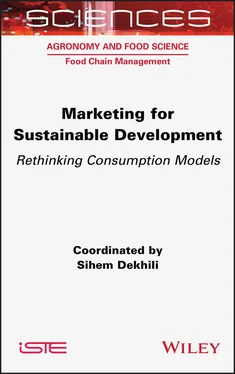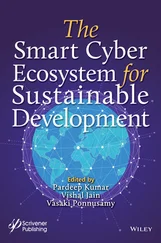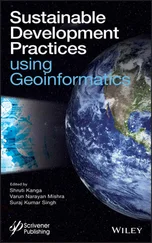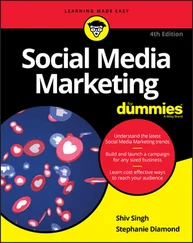If there have been some opportunist practices on the ground, this should not, in any case, call into question the marketing field as a scientific discipline. From the beginning, marketing has been positioned as a medium for the relationship between a company and its consumers, and the search for well-being remains at the very foundations of the discipline (Andreasen 1994). Today, more than ever, marketing should implement credible and visible actions that will help to increase the legitimacy of companies in relation to the concept of sustainable development (Gabriel 2003). Our society, as a whole, seems to demand marketing that is accountable and demonstrates “its good faith”. This book aims to respond to that demand: it is essential not only to go beyond the marketing-sustainable development split, but also to demonstrate the interest of relying on the tools and analytical frameworks of marketing to serve the cause of sustainability. Marketing and sustainable development can be intertwined in order to achieve a common goal, of strengthening ecological behaviors.
Fourteen chapters, rooted in action and offering rich and detailed views of different topics related to the question posed, are included in this book. The analysis suggested by scholars specializing in the field of responsible consumption is completed by the views of professionals in the field (managing directors, sustainable development heads, managers, consultants, public officials, etc.). These chapters cover five complementary themes.
The first theme explores, in the first two chapters, the role of the consumer in the green movement . In Chapter 1, Abdelmajid Amine and Mouna Benhallam consider individuals with a high level of environmental and social concern, who opt for radical changes regarding the traditional consumer pattern. By studying the case of engaged online communities, the authors show that, through their resistance to the market, these consumers are contributing to transforming it by promoting responsible consumption.
In Chapter 2, Mohamed Akli Achabou and Sihem Dekhili, on the other hand, consider the case of consumers less sensitive to ecology. The significant attention paid to the intrinsic characteristics of the offer (such as quality in the case of luxury products) can lead to a rejection of eco-products; some consumers believe that the integration of sustainable attributes decreases the offer’s value. More broadly, by highlighting a perceived contradiction between luxury and sustainable development, the authors deduce that the green issue cannot be explored in the same way for different product categories.
The second theme , addressed over three chapters, concerns waste , in particular, that produced in the food sector. This is a subject that has played an important role in media and political debates in recent years.
In Chapter 3, Guillaume Le Borgne, Margot Dyen, Géraldine Chaboud and Maxime Sebbane question the role of the consumer in the above-mentioned waste. By analyzing the different structural, contextual and chain organization constraints, the authors call for the responsibility of consumers in waste to be put into perspective, compared to the other actors in the food system. By exploring the case of mass catering companies, they highlight the sources of the ineffectiveness of measures to combat food waste.
In Chapter 4, Amélie Clauzel, Nathalie Guichard and Caroline Riché address this issue in a smaller sphere, that of the family. They outline the role of each family member in the food waste phenomenon and mention the differences in perceptions of food waste within the same household. Moreover, the authors analyze the causes of waste resulting from family purchase and consumption processes.
In Chapter 5, Maud Daniel-Chever, Élisa Monnot, Fanny Reniou and Lucie Sirieix look at a new mode of buying products that is aimed at combating waste: packaging-free products. The authors provide, on the one hand, an understanding of the profiles of consumers buying such products, their motivations and barriers, and on the other hand, an analysis of the offer in this field and the complexity of managing it.
The third theme in this book concerns communication . Three chapters are focused on a thorny question in responsible marketing: should companies communicate about sustainability? And if so, how? To what extent can this communication be responsible and effective in relation to the target’s expectations? The topic is a particularly important one as the reactions to societal communications are often negative and the phenomenon of greenwashing continues to be prevalent.
To respond to these questions, in Chapter 6Agnès François-Lecompte and Sylvie Foutrel, by considering societal communication as a triptych (“what message”, “what channel” and “to whom”), discuss the conditions of its effectiveness. The authors study the question of the credibility of the message and the potential of the societal communication to create value for customers.
This reflection is expanded in Chapter 7through the contribution of Sihem Dekhili and Samer Elhajjar, which is focused on a particular element of communication: the tone used. More specifically, the authors examine the effectiveness of “provocation” in environmental advertising. Given the consumer skepticism towards the green claims of companies, some brands have opted for greenbashing, a form of communication characterized by sarcasm. The advertisers, in such cases, do not hesitate to deliberately mock green activists and/or trends. The authors detail the motivations that lead brands to favor this communication tone and test its effect on the effectiveness of environmental advertising.
The topic of communication is brought to a close in Chapter 8by Philippe Odou, Marie Schill and Manu Navarro, who investigate how to communicate effectively on one particular complex topic: climate change. The authors analyze the types of communication and the emotions to stress when targeting adult profiles showing different emotional reactions and intentions to act. At a time of unprecedented mobilization among the younger generation, the authors are interested in the specific case of children, providing a deep understanding of the mental representations of climate change among this target group.
The fourth theme , addressed over three chapters, looks into the issue of regulation . Firstly, in Chapter 9, Leila Elgaaied-Gambier and Laurent Bertrandias suggest an interesting analysis of the following question: how can the integration of a marketing approach into public policies for sustainability contribute to making them more acceptable in the eyes of the target audience? The authors discuss different approaches adopted by the public authorities in environmental regulations and discuss their advantages and limitations, before further consideration of the contribution of marketing in terms of strengthening the efficiency of pro-environment public policies.
Then, in Chapter 10, Mickaël Dupré, Patrick Gabriel and Gaëlle Boulbry address the issue of information on the reparability of products. They propose to determine whether this constitutes a selling point, especially among people particularly concerned by sustainability. The authors offer an understanding of the repairability concept and consider the effects of a “reparability label” on consumer perceptions and behaviors in the case of household appliances.
Lastly, in Chapter 11Mantiaba Coulibaly-Ballet focuses on the fair trade label. Through a study conducted in Côte d’Ivoire, the author questions the role of this cue in both the spread of sustainable production and the encouragement of responsible consumption, in a context where sustainable development is still emerging.
The book concludes with a very current fifth theme , the digital domain . Three chapters emphasize the role that technological and digital tools can play in the expansion of the green movement. These tools have the advantage of directly affecting the decisions and behaviors of consumers more than their values, which can lead to improved effectiveness in the adoption of responsible behaviors.
Читать дальше












